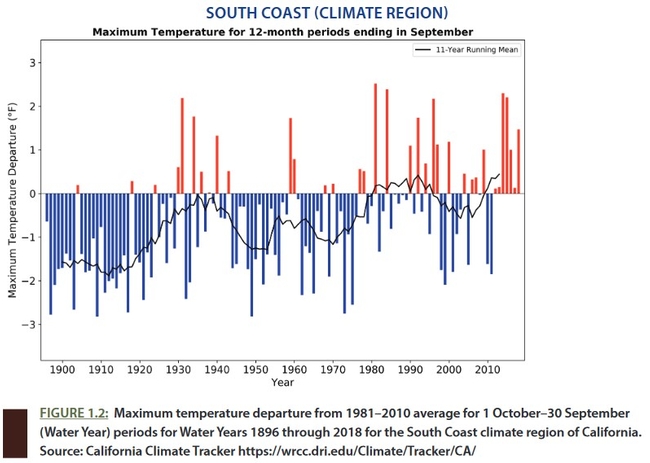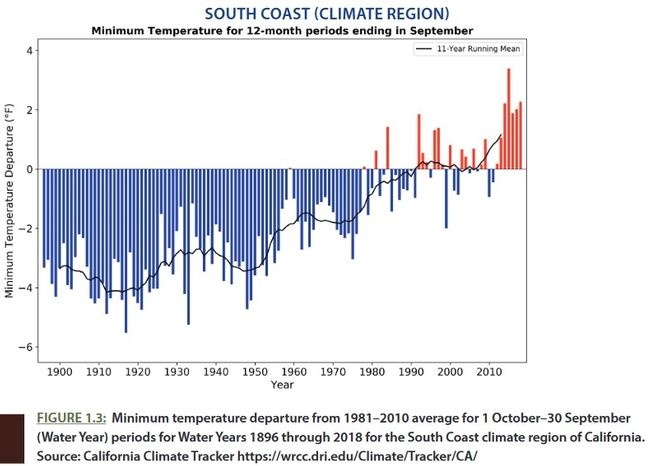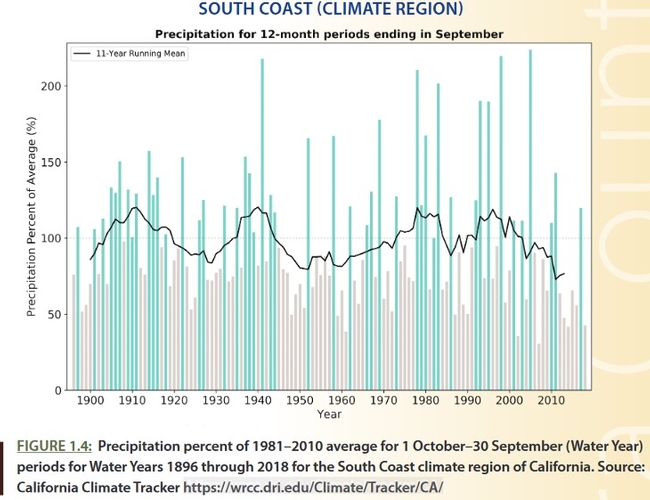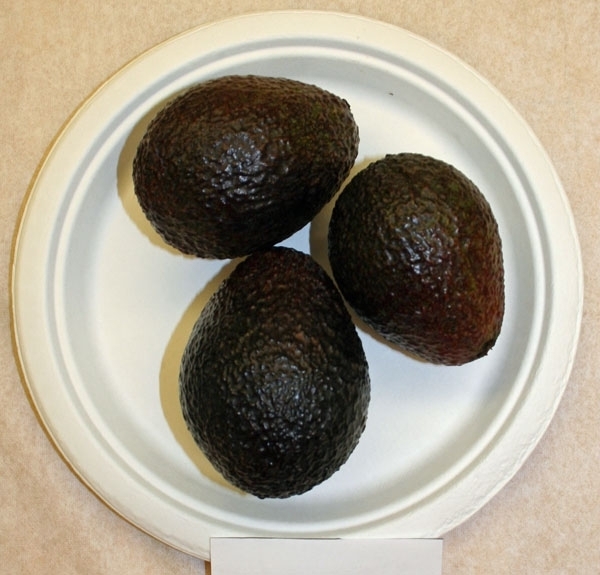A University of Cordoba and Spanish National Research Council research team validated an indicator based on using a tree's temperature to calculate relative water consumption at an almond tree plantation
In 1995, the severe drought that devastated Spain left some farms using irrigation agriculture without water supplies. Though it has not happened again since, climate change increases the chance of this threat. For farmers growing annual crops, an occurrence such as this one would mean losing a year's work but those who have groves of trees risk losing not only their year's production, but their long-term investment as well.
A research team from the University of Cordoba and the Institute for Sustainable Agriculture at the Spanish National Research Council in Cordoba has been working for years on several projects to improve water management and maximize the productivity of tree crops such as olives, almonds and citrus fruits. One of their lines of research is based on the fact that when there is a water shortage, trees transpire less, get warmer, and end up producing less.
In their latest research project, they studied how an indicator called Crop Water Stress Index (abbreviated to CWSI), based on detecting temperature increase in trees with water stress, is related to relative water consumption in an almond grove. Tree water consumption or transpiration is very difficult to measure whereas a tree's temperature is easily taken using remote sensors, similar to those used on a daily basis during the pandemic to detect people with fevers. In their latest work, this group experimentally demonstrated for the first time that there is a relationship between relative transpiration and the CWSI in almond trees. So, farmers can find out at any moment if the trees are consuming water at 80-90% of their capacity, meaning within optimal levels, or if they have high levels of stress and urgently need to be supplied with more water.
"This indicator, the CWSI, has the advantage that relative water consumption can be determined via remote sensing, using drones or manned planes and a map of the transpiration in different areas of a plantation can be obtained. In the future, satellites will most likely be used to do this work very precisely on big plantations", explains Elías Fereres, Professor Emeritus of the Agronomy Department at the University of Cordoba and a member of the research team, which is led by Victoria González Dugo from the Institute for Sustainable Agriculture at the Spanish National Research Council.
Therefore, these CWSI maps will allow for irrigating different areas of a farm in different ways in terms of the water level needed at each moment, thus maximizing production with the minimal necessary water resources or those available at the time. This research is within the framework of the technique known as precision irrigation, a new system that uses the most advanced technology to irrigate at an optimal level, supplying the exact amount of water to every part of the grove and circumventing losses. "The aim is to use water effectively and where it is most needed", points out Elías Fereres.
Though the research was performed on almond plantations, this research could be used on other tree crops such as olive trees, which are so important to the economy in Andalusia and on many occasions suffer from times of water shortages.
A related project on which the group is also working is being led by Professor Francisco Villalobos from the University of Cordoba. It is called Project Olive-Miracle, which aims to develop a model to forecast how olive trees behave to climate change, which would provide more information in order to make decisions in the sector in the future.
V. Gonzalez-Dugo, L. Testi, F.J. Villalobos, A. López-Bernal, F. Orgaz, P.J. Zarco-Tejada y E. Fereres. "Empirical validation of the relationship between the crop water stress index and relative transpiration in almond trees". Agricultural and Forest Meteorology
DOI: https://doi.org/10.1016/j.agrformet.2020.108128
A is for Almond but also for Avocado
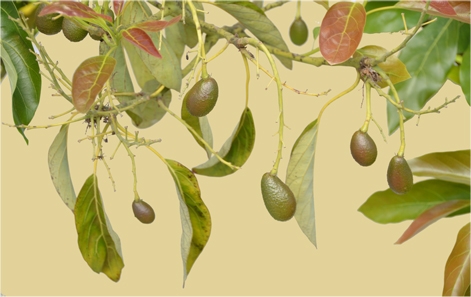
avocados on a tree picture
Posted on
Friday, November 6, 2020 at
8:19 AM
Focus Area Tags: Agriculture
In 2018 the Ojai Valley Land Conservancy (OVLC) accepted a grant from the Resources Legacy Fund on behalf of Watershed Coalition of Ventura County (WCVC) for a study of projected climate changes in Ventura County. OVLC contracted with Drs. Nina Oakley and Ben Hatchett, climatologists with the Desert Research Institute (DRI), to evaluate historic climate variability and projected changes in Ventura County. This information is needed to “paint a picture” of future climate in the watersheds of Ventura County (Ventura River, Santa Clara River, and Calleguas Creek) to support and inform climate change-related decision-making. This study provides important information for the amendment to WCVC's Integrated Regional Water Management (IRWM) Plan
You can find a copy of the report on the DRI website at: https://wrcc.dri.edu/Climate/reports.php.
To view presentations and other information from the two WCVC Climate workshops conducted with Drs. Oakley and Hatchett in October of 2018, and April of this year please visit: http://wcvc.ventura.org/documents/climate_change.htm
Some of those most interesting findings for me, are the historical data. For example, data for the years 1896 – 2018, show a tendency toward increasing maximum temperatures over the period, especially the last 10 years (Fig 1.2). But most interesting, is the increasing minimum temperatures (Fig 1.3) as compared to the maximum temperatures. Winter where is thy sting? The 2018-19 winter was the coldest in my memory, with the heater on full time at night, but there was no general frost damage this year. I can remember 1990 and 2007.
Precipitation in the South Coast region exhibits high interannual variability over the period examined. No notable long-term trends are observed (Fig. 1.4). Since approximately 2000, the 11-year running mean decreases, associated in part with the 2012–2019 drought. It is unclear whether this trend will continue in subsequent years.
There's a lot more information in the report. READ On.
But something to keep in mind, is that we had a terrible heat wave last July, and it could easily happen again. Growers who had their trees well hydrated before the heat arrived, sustain less or no damage to the trees and much less fruit drop. Trees that were irrigated on the day it started to get hot, never had a chance to catch up with the heat. Once the atmosphere starts sucking the tree dry, water movement through the soil, roots and trunk cant keep up with the demand. Weather forecasting is pretty accurate 3 days out, and if heat is forecast, get those trees in shape. You can run water to reduce the temperature and raise the humidity in the orchard to reduce transpirational demand which helps some.
Something we learned last year. What we saw and what to expect:
https://ucanr.edu/blogs/blogcore/postdetail.cfm?postnum=27676
Map of elevational changes in Ventura County and how
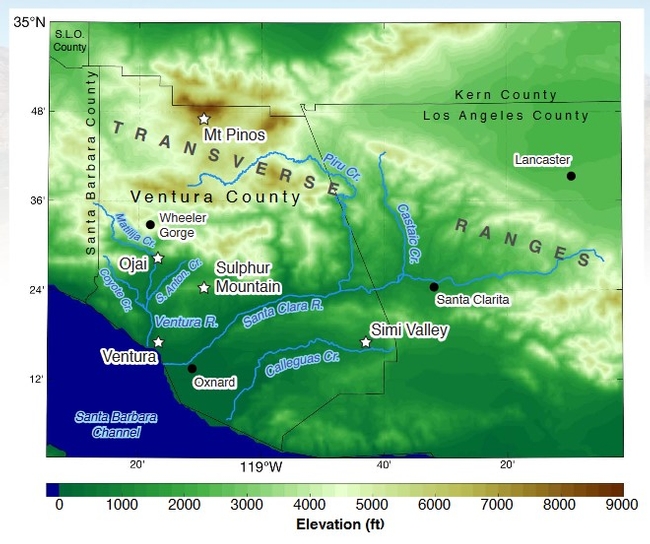
elevation ventura
Posted on
Friday, June 14, 2019 at
6:27 AM
California avocados are the best in the world. So says downtown restaurant manager Daniel Avalos in a Valley Public Radio story by reporter Ezra David Romero.
The fact that they currently thrive only on a small swath of coastal Southern California is being challenged by UC Cooperative Extension specialist Mary Lu Arpaia. She is on a mission to find avocado varieties that withstand the hot summers and cold winters of the San Joaquin Valley, where irrigation water and crop land are more abundant and cheaper.
She hopes to find avocado varieties that ripen at various times of year, and varieties that might be an alternative crop for citrus growers should huanglongbing, a disease that has devastated the Florida citrus crop, take hold in Central California.
"There's a void of California fruit on the market in the months of November, December and actually early January," Arpaia said. "So if we can find different selections that maybe are unique that fit into that window, then we help the entire California avocado industry."
An as-yet unnamed avocado variety.
Romero visited the UC Lindcove Research and Extension Center to see the trees in Arpaia's study. Currently, the vast majority of California avocados are the Hass variety. The goal is to breed varieties with similar eating quality that grow to a moderate height and have high yield. One potential that is already being produced by nurseries is called "gem."
"This is gem," said Eric Focht, a staff research associate in Arpaia's lab. "You can see it's a little more oval or egg shaped than Hass. It has the speckling on the skin. Now as this ripens, it will turn dark and a lot of times the speckled lenticels with get a yellow kind of golden color it it."
Another promising variety is called "lunchbox" because of its small size. According to Focht, it "just falls out of the skin." Arpaia said, "It makes wonderful guacamole and I found, with a non-replicated test in my refrigerator, the fruit doesn't brown."
Arpaia's favorite guacamole recipe is featured at the end of the story on the KVPR website. And there is more on this story at:
http://abc30.com/society/new-research-may-allow-the-central-valley-to-become-a-major-producer-of-avocados/1958899/
Mary Lu Arpaia
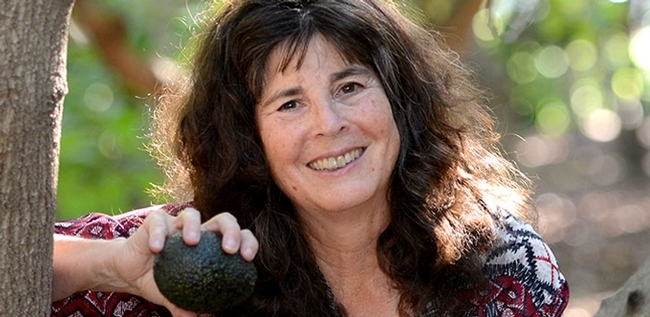
Mary Lu
Posted on
Friday, May 12, 2017 at
5:46 AM
Tags:
avocado (0),
California (0),
citrus (0),
freeze (0),
frost (0),
heat damage (0),
irrigation (0),
lemon (0),
new crops (0),
new variety (0),
nutrients (0),
nutrition (0),
oranges (0),
temperature control (0)



